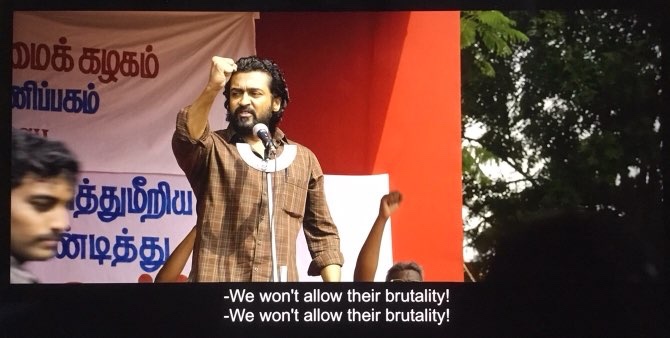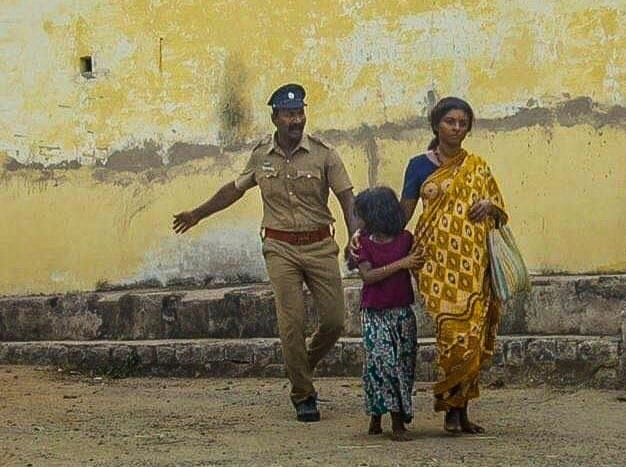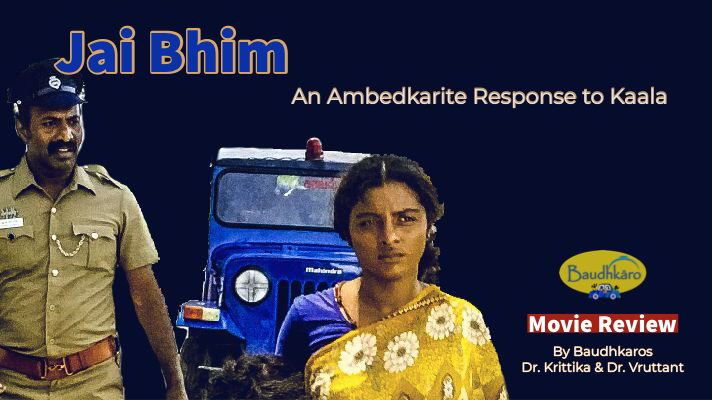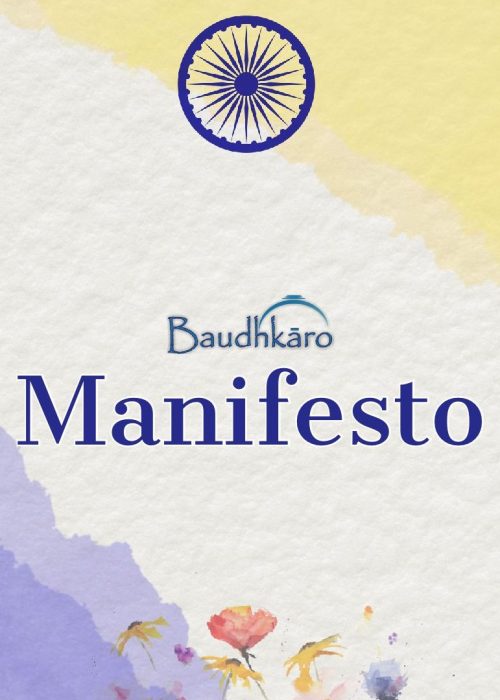For a successful revolution it is not enough that there is discontent. What is required is a profound and thorough conviction of the justice, necessity and importance of political and social rights.
Dr. B. R. Ambedkar
Jai Bhim! What a wonderful ode to the greatest Indian1 and arguably, the most illustrious personality of modern India- Dr. B. R. Ambedkar! Just the title itself was enough to create a stir on various social platforms and now, with its current IMDB ratings soaring at a 9.6, it definitely has made a wide and deep impact. Jai Bhim comes at an opportune time when Ambedkarite philosophy, and thereby the movement, is surely gaining popularity, but even so, it is refreshingly different from the dominant imagination and representation of Ambedkarism.
There have been many movies that deal with similar topics in recent times, especially in Tamil cinema. Many of them are identified as Ambedkarite perhaps because they fall in the broader spectrum of the claimed anti-caste, anti-discriminatory and anti-establishment ethos. No doubt, there is a growing market that has become accepting of such themes even outside of southern India. In the last three years or so, these movies have mapped out the trajectory of the Ambedkarite movement through their myriad interpretations and representations. The growing popularity of Dr. Ambedkar and the use of related imagery or symbolism in movies indicate a progressive trend that is the signifier of the contemporary cultural and political transformation in India.
Kaala was a trendsetter amongst these movies in that it (positively) overwhelmed the audience by its blatant, and often overplayed, reference to Ambedkarite symbols. We have previously discussed our views of Kaala in this article and have mentioned how Kaala’s sensational portrayal of utopia is more communist than Ambedkarite. In stark contrast, Jai Bhim is far more subtle in its realistic depiction of politics and truly deals with Ambedkarite philosophy while digging into its layers. This is nothing but the success of Ambedkarism that such a fine portrayal has been received so well by the consumers, igniting hope that people are truly understanding what Dr. Ambedkar’s philosophy and methodology is. The following discussion on the movie Jai Bhim aims to highlight this progression and transformation visible in Indian political culture via a comparison with the movie Kaala.
“मजिस्ट्रेट ने मुझसे पूछा तुम्हारा वकील कौन है।
तीस-चालीस आदमी बैठे थे कोट डालके, हमारे ही थे सब वकील,
एक ने (आँख उठाकर) ऊपर नहीं देखा…
हमारे लोगों में लड़ाकू वकील नहीं है।”
“The magistrate asked me who my lawyer was.
There were 30-40 people in coats sitting in front; all lawyers from our community,
Not one of them looked up…
Our community does not have fighter lawyers.”
One of the chief proponents of Ambedkarite morality and rationality, and an ex-member and founder of Dalit Panther, Leader Raja Dhale put forward his reflection of the Ambedkarite movement in this interview. While facing an acute political crisis, he realised the urgent need for formidable lawyers amongst the oppressed communities. If such an established leader is talking about not getting the necessary institutional support, one can imagine how bleak the case is for an ordinary person. While destroying the politics of Dalit Panther, he argued for the need of steadfast lawyers rather than political heroes. “Don’t think of becoming a leader, think of becoming a good lawyer,” he would tell the youngsters. His criticism is very telling of the politics of the Dalit Panther movement that created the stereotype of an angry, aggressive, violent, impulsive, anti-establishment leader who does not utilise democratic tools for demanding justice. Such an image of an ideal leader is moulded by the Dalit Panther Manifesto, written by Marxist Namdeo Dhasal with the help of his naxalite fellow Sunil Dighe. Unfortunately, that view of a heroic leader of the oppressed is still quite widespread. The “Dalit” leader must necessarily be always angry, disordered and destructive, almost averse to the constructive and creative use of the systems of democracy.
From that lens, Kaala had the perfect Dalit hero as did the several films following suit. The method of acquisition of justice, or at least the means to it, were very impulsive and violent, akin to the ideal marxist. It is far from the ideal leader that Dr. Ambedkar envisioned. Just the sprinkling of Ambedkarite symbols cannot salvage a depiction that is essentially half-baked. This half-baked depiction, rather, further strengthens the casteist lens through which Dr. Ambedkar and Ambedkarite politics is seen. It limits him to a specific population and a specific context, not allowing for his philosophy to be seen in its vastness of scope. Director Tha Se Gnanavel attempts to fight this social myopia through his film, Jai Bhim.
As antithetical as could be to Kaala, a lead character in Jai Bhim, young Chandru, is shown as a creative, contemplative and analytical lawyer. He is generally calm and composed and the only time he is shown losing his temper is when he faces dishonesty. Even the scenes with courtroom drama are directed to be well within the decorum of a real courtroom, quite opposite to most aggressive portrayals of lawyers. It really showcases that one need not always be overtly vocal or physical to be in the right. The rage that Chandru shows towards the public administrators in protests is very visual in order to register his protest but what he does in his work, for the betterment of the society, is very composed, strategic and judicious- much like how Dr. Ambedkar dealt with his opponents.
When we reviewed Kaala, we were very firm in our stand that despite using Ambedkarite symbols, it wasn’t an Ambedkarite movie as its portrayal of Ambedkarite philosophy left much to be desired. But Jai Bhim was such a diametrically opposite experience. Not only is this a film claiming to be an ode to Dr. Ambedkar, it also shows realistically what his philosophy and politics is. It truly felt like the fitting response to what Kaala was lacking in its representation – an Ambedkarite Solution. While Kaala felt much too forceful in its reinforcement of an ‘Ambedkarite’ hero, Jai Bhim presents one whose Ambedkarism is unwavering but subtle.
Kaala and Jai Bhim can be taken to be quite similar in their premise where two marginalised communities are fighting for their rights and respect- one that lives illegally on a land that they then claim, the other that lives on the outskirts without being acknowledged or having a proof of residence or even citizenship. But their fights differ drastically. As we have claimed earlier, Kaala propagates communist methods of fighting injustice wherein, if the protests turn out to be futile, the proletariat can take matters into their own hands and indulge in riots or lynching. It demonstrated a utopian revolution where the proletariat from all walks of life was enraged and organically motivated to unite against the oppressors. But the case in Jai Bhim is more realisable where the protagonist, an illiterate Irula woman, has profound faith in justice, supported by a headstrong lawyer who wants to ensure justice for not just her but also for generations after her. Jai Bhim presents a very pragmatic process of the fight of an individual from a marginalised group struggling with everyday oppressions in a tactical, principled way that is more achievable and hopeful. It reinstates the power of an individual in empowering the society and portrays the righteous blend of democratic structures and the needful utility of people’s indigenous political mobilisations. Even the protest of the indigenous people shown in the film is methodically done to politicise the society about the case by using appropriate contextual symbols, like the usage of a serpent and the colour yellow. One must not ignore the powerful scenes of the indigenous political movement with banners carrying images of indigenous leaders.
Kaala and Jai Bhim both performed very well with the audiences, but their effect and the audiences’ responses could not be more stark. On one hand, Kaala, with superstar Rajni as the lead, gathered a whirlwind of positive responses, especially from Ambedkarite activists, politicians and academics. On the other hand, Jai Bhim received mixed reviews, including lukewarm criticisms, resulting in a much less pompous but overall positive attention. Many of the criticisms, though, were from Ambedkarite politicians and especially, academics. While Kaala is popularly believed to have bombed at the box office, mainly due to its huge production cost, Jai Bhim is showing the promise of being a film that will be as appreciated in the long run as it is being done all over the world upon its release.


Of course, while cruising on a wave of accolades and positivity, Jai Bhim has not been bereft of certain criticisms, and those criticisms are extremely important to note. Firstly, a lot of criticism for Jai Bhim stems from the fact that Chandru does not belong to the oppressed communities and hence his attempts to work for the acquisition of the justice for the marginalised or depressed classes are a tell-tale sign of his saviour-complex. This is a valid criticism against Jai Bhim. It is rooted in the historical superior attitude in which the oppressor classes are socialised. They often have a typical disdainful lens through which they look at the marginalised classes. From this gaze it is very difficult for them to see the marginalised as the powerful agents of their own transformation.
In fact, it is quite problematic that the creators of Jai Bhim did not cast an actor from the marginalised community for either of the lead roles. Not only that, the most troublesome part of the movie was the issue of Sengeni’s “black-face”. It is already dismal that mainstream film industries are still using actors from privileged backgrounds to showcase marginalised people but there’s no dearth of actors from myriad backgrounds in India if one really looks. To top that, this trend is especially prominent while casting female actors where time and again conventional-looking actresses are taken and made to look different. It is high time that mainstream cinema embraces diversity, especially when it harps about getting the chance to be ambitious and so-called experimental on OTT platforms.
However, these criticisms cannot undo one’s Ambedkarite belief of having a strong conviction for justice. Jai Bhim highlights the self-esteem of the oppressed communities a lot more emphatically in its storytelling. In fact, contrary to what a lot of victimised SC/ST’s are forced to do, the affected family here does not flinch from their position at all, especially with the faith that law will serve them some form of justice. This moral conviction is something that even Ambedkarites often falter with. Given this situation, it is rather a victory for the Ambedkarite movement if creative minds are able to understand and display the essence of an Ambedkarite philosophy which works for long-term, long-lasting goals rather than immediate, temporary outcomes. Jai Bhim, thus, should be considered a sincere effort by the people who, with a progressive will to overcome their social-psychological prejudices, are willing to join the Ambedkarite movement of Justice and Dignity. It must be noted that joining is distinguished from leading here.
It is a fact that the so-called upper castes have remained more than loyal to the cause of maintaining the brahmanical status quo in India. Being on the top of the hierarchies, they have forever been the beneficiaries of this brahmanical graded inequality and thus have shown the least signs of becoming the carriers of justice and equality. Yet, being rigid on the idea that they must remain passive in the pursuit and establishment of justice is not fair. Believing that they can’t play an active role in achieving justice, and therefore must not be included in the larger scope of the organisation of justice, is nothing but pessimism. One shouldn’t fall prey to such defeatist pessimism. It is rather a sign of Ambedkarite morality to welcome anybody who is willing to join hands in the pursuit of Justice, despite having any social background, on conditions that they unlearn and be ready to cooperate with humility and camaraderie. This furthers the idea of both Justice and Metta.
Secondly, there are also charges against the real/reel protagonist and creators of appropriating ‘Jai Bhim’. This charge must be handled with care because the appropriations of Ambedkarite legacy have proved detrimental to the cause of justice. While doing so, the difference between the appropriation and acceptance/transmission of a movement should be noted. No doubt, appropriation in such cultural contexts is nothing but unethical when it aims to distort, disintegrate and divert the principles of that legacy. However, acceptance/transmission is when the theory is sincerely carried forward with the aim to propagate and develop it so as to benefit many people, the Bahujan. In Kaala, the usage of Ambedkarite symbols while celebrating the method of a Bolshevik revolution2 is more of an appropriation of Ambedkarism as it grossly undermines the Ambedkarite means. This cannot be said of Jai Bhim at all. The message and means shown in this movie are very Ambedkarite in nature and escalate the popularity of a philosophy many struggle to accept.
Yes, it can be said that the creators of Jai Bhim are concerned with making material profits while transmitting the ideas that represent the slogan ‘Jai Bhim’. But this commercialisation cannot be called appropriation. In case it is misunderstood thus for the reason that they are being carried by the so-called upper castes, then such claims must be strongly rejected. Only the foolish and confused would identify themselves as the heirs of the slogan ‘Jai Bhim’, based on their caste or any such social classes. Nobody, not even the kith and kin of Dr. Ambedkar, can claim the sole inheritance of the progressive, just and revolutionary legacy of the idea of ‘Jai Bhim’. Kaala cannot be an Ambedkarite movie only because it is created by a so-called lower caste person. Jai Bhim can be an Ambedkarite movie even if it is created by a so-called upper caste person.
Moreover, another common criticism that Jai Bhim has attracted has been with respect to the communist imagery and strong portrayal of communist politics at every turn of the story. This is not something Kaala had faced mainly because the movie was popularly taken to be Ambedkarite with the lack of judicious skepticism. It is nothing but a folly if such portrayals are not tested against the litmus of intent and impact. In Jai Bhim, Director and Writer, Tha Se Gnanavel, was very forthcoming about the communist symbols and imagery being part of Chandru’s socialist background but he also wanted to highlight Periyar and Ambedkar’s roles in his life and hence, used their portraits alongside Marx’s on the verandah of Chandru’s house. But, in a scene where Chandru is tending to his garden we also get a glimpse of an emaciated Buddha under a peepal tree. Taking creative liberty, it could be identified with Sujatha’s role in showing the middle path to the Siddhartha Gautama and could be taken as an inspiration for the lawyer who used both his privilege and his agency to further a humanitarian cause.
Even though the title of the movie is Jai Bhim, it is nonetheless an autobiography of a communist activist. Chandru was a very formidable leader of SFI during his studentship who then went on to lead quite a few protests as a member of the workers’ union in his youth. So the display of protests, his use of the word “comrade” for fellow workers and the images and busts of Marx and Lenin at his house were an organic depiction of his world, which did not needlessly inject any marxist philosophy in the film. On the contrary, Kaala was an overall marxist projection. If one couldn’t identify the nature of Kaala as laden with Marxism and considered it an Ambedkarite movie only because its maker was from the scheduled caste, then it should be noted that there lies a serious political crisis.
One of the very prominent and defining scenes in Jai Bhim shows Chandru leaping the barricade to attend a hearing at the court. This leap seems to be quite symbolic of Chandru’s shift from Marxist means to Ambedkarite action- a leap that many so-called revolutionaries are wary of taking. We can go a step further to claim that the leap is also indicative of the lessening of the confusion regarding the means of an Ambedkarite movement in the general public, going by the popularity of this movie.
Justice Chandru, in a recent interview, mentions how that leap showcases his overcoming of a moral dilemma where lawyers were protesting while cases of human-rights violations were pending. His was a dilemma between political ideology and professional ethics. He said that other lawyers were often angry with him for such decisions but he maintained that, “The court is meant for litigants, not lawyers. Lawyers are only agents of the trial.” This is resonant of the rationale Dr. Ambedkar gave while talking about the striking of the mill workers and the work of the revolutionists therein. He was very critical of the communist act of strike-protesting as we can see in this editorial piece. Chandru’s understanding of the fine line between the real revolution and the act of revolutionism is nothing but his increasing awareness of Ambedkarite philosophy. As is his own acceptance, “Marxism helped me understand Ambedkar better” which is also the route many Ambedkarites take since Dr. Ambedkar has been made largely inaccessible to the population. It is appreciable if movies such as Jai Bhim can help disseminate rational Ambedkarite philosophy and help to diminish the dominant stereotypical ideas of Dalitism, Dalit-Bahujanism and utopian revolutionism vis-a-vis Ambedkarism among the masses.
Chandru’s approach to Ambedkarism is very different and well informed by Dr. Ambedkar’s writings. Perhaps it was his sensible and rational outlook that led to his expulsion from the CPI(M) prior to Rajakannu’s case. So much so, his mentor, Justice V R Krishna Iyer, told him, “We are not red enough, let’s start a pink party.” His determination to be humanitarian in his approach to law resonated with Dr. Ambedkar’s outlook and over the years, he leaned more and more towards Ambedkarism. He admits to being so affected by Dr. Ambedkar’s writings during these times that he would often quote him in his cases. His book அம்பேத்கர் ஒளியில் எனது தீர்ப்புகள் (My Judgements in the Light of Ambedkar) recounts such cases where he used Dr. Ambdekar’s method extensively while learning a lot about the depressed and marginalised classes.
It is a bitter truth that many communists expolit the valid rage of tribals and include them in their naxalite organisations. At the same time, as uncomfortable as it may be to accept, most of the tribal belts in the country are still better connected to Communist organisations rather than Ambedkarite ones. It can be said that where Communism in India has failed to understand or address the issues of India’s graded inequality emphatically due to its love for maintaining a status quo, the Ambedkarite movement, so far, has not been as successful to reach a wide area as the Communist organisations, as is rightly portrayed in Jai Bhim. In this light, the movie exposes the lacuna of the movement constructively leaving a strong sense of desire for Ambedkarite organisations to take action. In that vein, the creators of Kaala did not need to do the same as it was not only fictional but also set in such a metropolitan city like Mumbai. It is perhaps the folly of the Marxist roots of Dalit Panther that caused the makers to keep the status quo all the same. The politics of Dalitism thrives in the market of victimhood.
The brilliance of Jai Bhim lies in its conviction to not give in to the temptations of the market just like the lead characters. The real protagonist is Sengeni who spearheads the politics of the title by her relentless struggle and refusal to bow to threats and bribes, portrayed brilliantly in her meeting with the DGP. It is emblematic of the force that conviction in justice can have. The portrayal of power in this movie is successful because it shows how the system can be incredibly strong when layered with the undercurrents of belief and faith. This is almost a slap on the face of those anarchists who believe in the system as being inherently flawed or unjust. Jai Bhim reinforces the power of democratic institutions and constitutional methods, best showcased in the scene where the DGP orders the SI to personally escort Sengeni back to her village, at the instruction of the High Court. This reinforcement is clearly visible in her attitude while walking- an iconic “walk of the profound conviction of justice”.

The movie successfully spotlights the question of dignity- of a person, a community and the society at large. Just after Dr. Ambedkar’s voice3 booms on screen, there is a sequence where Chandru requests the court to remove the handcuffs of an accused because he knows, through his legal acumen and conviction, that the law identifies such treatment as being against the dignity of that person. In doing so, he is upholding the value of equality and dignity of persons, which must not be violated through any discriminatory treatments. Here we see that human dignity can definitely be restored in a non-violent way which is only possible through adhering to the constitutional methods of transformation.
The movie has done a good job to not only highlight the positive role of democratic structures, but also given an inspiration through Sengeni and Chandru to lawyers, activists and the masses to have confidence in that structure. It is a fact that the most radical of marxist revolutionists, especially the leaders, always resort to the democratic means to bring about reforms and structural changes in society. But when it comes to their ideal revolution, it is mostly protestant in nature if not anarchic. In its true sense, the democratic system, especially in India, is meant to be accessible and useful to all, irrespective of caste, class, gender, age, sexuality, ethnicity, race etc. In fact, it bestows power to the downtrodden in a way that society may not ever be able to. Jai Bhim reinstates that message by highlighting the constructive method of Ambedkarism. This movie showcases that there is a huge scope for marxists to understand the realm of Ambedkarism given that they are ready to take the ‘leap’ of democratic methods.
Jai Bhim definitely deserves appreciation and it is a movie that one must watch. There are many people who work hard to preserve the fundamental values of Liberty, Equality and Justice and this movie is one such attempt to bring such people out in front of the masses. As Gnanavel has repeatedly said, movies have the potential to strongly influence the masses and hopefully, this movie ignites the conversation about Ambedkarite philosophy in practice. This film stands out as an indicator of the changing perspectives of the people, especially since it is being so widely acclaimed. Hopefully, in the coming years, more such movies will explore Ambedkarite beliefs and philosophy, as alienated from the Marxist shroud it is popularly kept in.
Jai Bhim is the slogan that represents the life and mission of a great epoch-maker whose existence has demolished the orthodox notions of superstitions and paved the way for global reconstruction.
Jai Bhim is the manifestation of that energy which is the perpetual source of confidence of those people who are wrenched and thrown away by oppressive Brahmanical social structures.
Jai Bhim is the expression of that unwavering hope which has survived thousands of years of traumatic and devastating mental slavery.
Jai Bhim is the beacon in the murkiest confusing times, steering minds on the correct direction without falling to any radical extremes.
More power to the movement of humanity- Jai Bhim!
“If we wish to maintain democracy not merely in form, but also in fact, what must we do? The first thing in my judgment we must do is to hold fast to constitutional methods of achieving our social and economic objectives”.
Dr. B. R. Ambedkar
Written by Baudhkaros Dr. Krittika and Dr. Vruttant
Endnotes:




